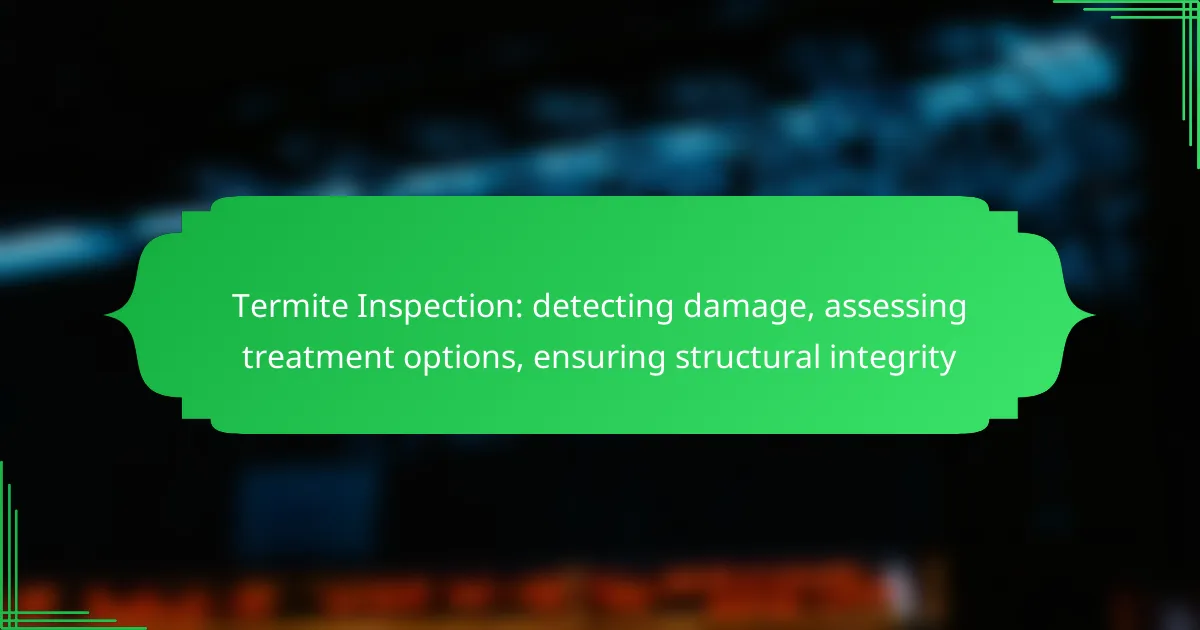Termite inspection is essential for identifying signs of infestation and assessing any resulting damage to ensure the structural integrity of your home. Early detection can prevent extensive harm and costly repairs, making it crucial to recognize indicators such as visible wood damage and frass accumulation. With various treatment options available, including liquid termiticides and baiting systems, homeowners can effectively address termite issues based on the severity of the infestation.
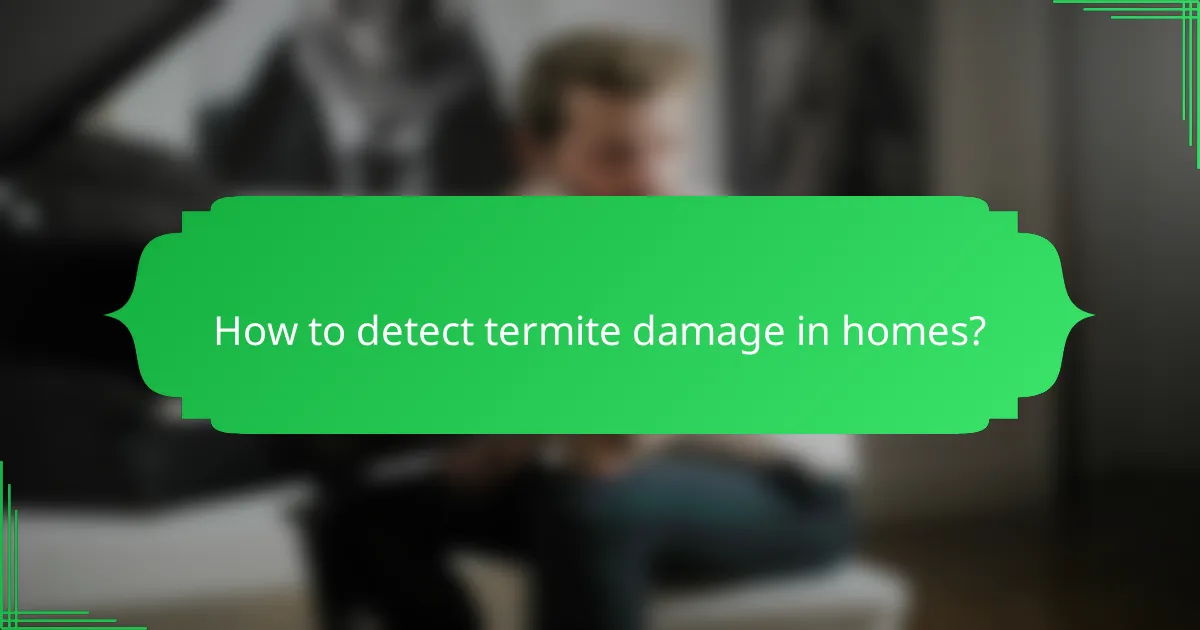
How to detect termite damage in homes?
Detecting termite damage in homes involves identifying signs of infestation and structural harm. Early detection is crucial to prevent extensive damage and costly repairs.
Visual inspections
Visual inspections are the first step in identifying termite damage. Look for mud tubes, which are small tunnels made of soil and wood particles, often found on exterior walls or foundations. Check for hollow-sounding wood, discarded wings, and frass, which resembles sawdust.
Inspect areas prone to moisture, such as basements, crawl spaces, and around plumbing fixtures. Pay attention to wooden structures, including beams, floor joists, and furniture, as these are common targets for termites.
Moisture detection tools
Moisture detection tools can help identify areas conducive to termite infestations. Devices like moisture meters measure the moisture content in wood and surrounding materials, indicating potential termite activity. A reading above 20% often suggests a risk of infestation.
Infrared cameras can also be useful, as they detect temperature variations that may indicate hidden moisture or termite activity behind walls. Regular monitoring with these tools can aid in early detection and prevention.
Professional termite inspections
Hiring a professional for termite inspections is often the most reliable method to assess damage. Certified inspectors use advanced techniques and tools to thoroughly examine your property, ensuring no signs of infestation are overlooked.
During a professional inspection, expect a detailed report outlining any damage, potential risks, and recommended treatment options. This service typically costs between $100 and $300, depending on the size of the home and local market rates.
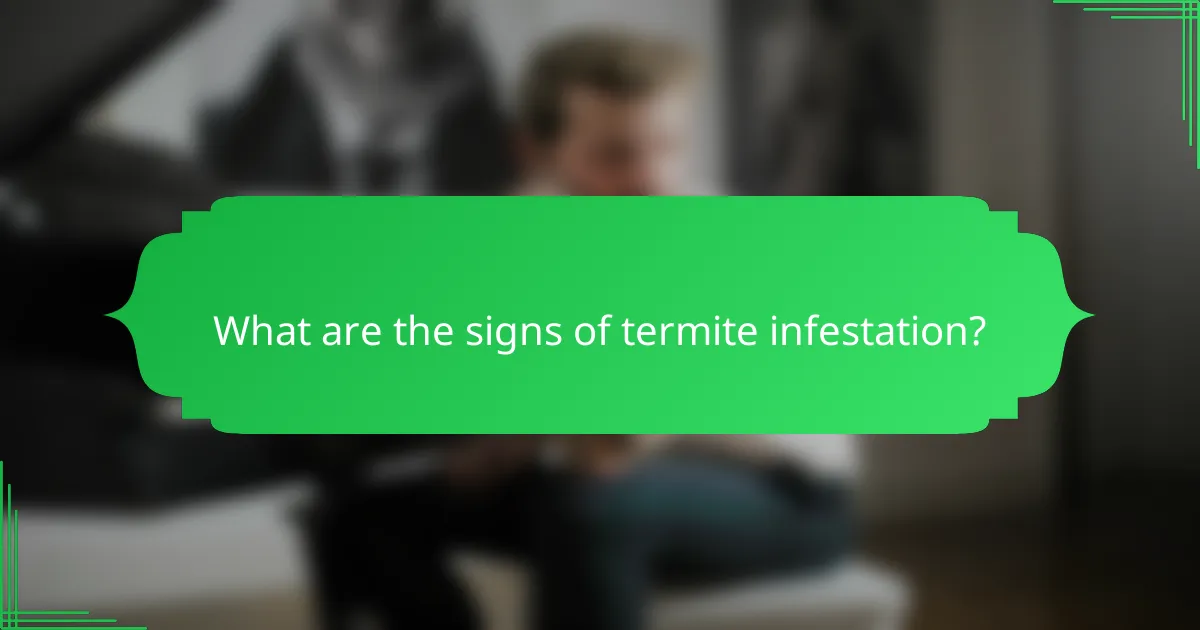
What are the signs of termite infestation?
Signs of termite infestation include visible wood damage, swarm sightings, and frass accumulation. Detecting these indicators early can help prevent significant structural damage and costly repairs.
Wood damage patterns
Wood damage from termites often appears as hollowed-out sections or tunnels within the wood. This damage can be subtle, making it crucial to inspect wooden structures, especially in basements, attics, and around foundations.
Look for blistering paint or sagging wood, which can indicate moisture and potential termite activity. If you notice these patterns, a professional inspection is recommended to assess the extent of the damage.
Swarm sightings
Swarming is a key sign of termite activity, typically occurring in the spring when reproductive termites leave their colony to establish new ones. If you see winged termites indoors or around your property, it indicates a nearby infestation.
These swarms usually last only a few hours, so prompt identification is essential. Keep an eye out for discarded wings, which can be found near windowsills or light sources after a swarm has occurred.
Frass accumulation
Frass, or termite droppings, resembles small wood pellets and is often found near infested wood. The presence of frass indicates active feeding and can help pinpoint the location of the infestation.
Regularly check areas where wood meets soil or where wood is in contact with moisture, as these are common sites for frass accumulation. If you find frass, it’s advisable to contact a pest control professional for further evaluation and treatment options.
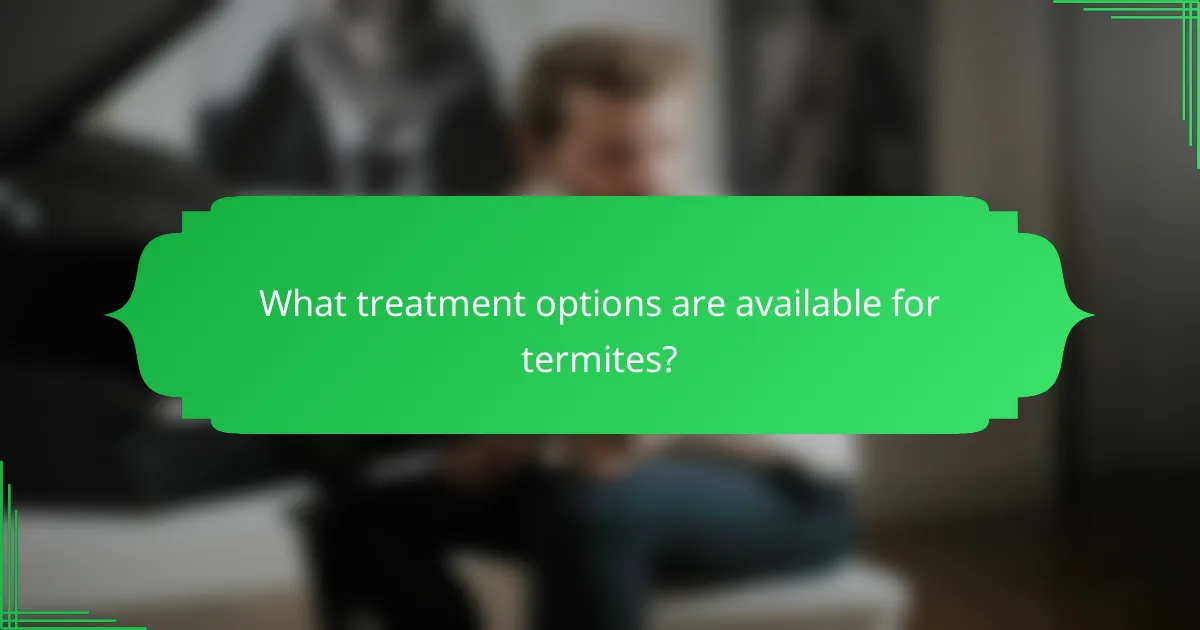
What treatment options are available for termites?
Several effective treatment options exist for termites, each with unique methods and considerations. Homeowners can choose from liquid termiticides, baiting systems, or fumigation, depending on the severity of the infestation and structural concerns.
Liquid termiticides
Liquid termiticides are chemical solutions applied to the soil around a structure to create a barrier against termites. These products can be used as a preventive measure or to treat existing infestations. It’s essential to follow local regulations and guidelines when selecting and applying these chemicals.
Common active ingredients include fipronil and imidacloprid, which disrupt the termites’ nervous systems. When using liquid termiticides, ensure proper application techniques to maximize effectiveness and minimize environmental impact.
Baiting systems
Baiting systems consist of strategically placed bait stations that contain slow-acting insecticides. Termites consume the bait and share it with their colony, leading to a gradual decline in the population. This method is less intrusive than liquid treatments and can be monitored easily.
Regular inspections are crucial for baiting systems to ensure they are functioning correctly. Homeowners should consider the location of bait stations and the potential for termites to find alternative food sources if baiting is not adequately maintained.
Fumigation
Fumigation involves sealing the entire structure and introducing a gas that penetrates all areas, effectively eliminating termites. This method is typically reserved for severe infestations and requires professional assistance due to safety concerns and regulatory requirements.
Before fumigation, homeowners must prepare their property by removing food, plants, and pets. It’s important to choose a licensed pest control company familiar with local regulations to ensure compliance and safety during the process.

How to choose a termite inspection service in California?
Selecting a termite inspection service in California involves evaluating certifications, customer feedback, and pricing. These factors will help ensure you choose a reliable provider who can effectively assess potential termite damage and recommend appropriate treatment options.
Check certifications
When choosing a termite inspection service, verify that the company holds relevant certifications. In California, look for licenses from the Structural Pest Control Board, which ensures that inspectors are trained and knowledgeable about local pest regulations.
Additionally, consider certifications from organizations like the National Pest Management Association (NPMA), which indicate adherence to industry standards. These credentials can provide peace of mind that the service employs qualified professionals.
Read customer reviews
Customer reviews are a valuable resource when selecting a termite inspection service. Look for feedback on platforms like Yelp or Google Reviews to gauge the experiences of previous clients. Positive reviews often highlight thorough inspections and effective communication.
Be cautious of consistently negative reviews, as they may indicate issues with reliability or service quality. Aim for companies with a balanced mix of reviews, focusing on those that mention successful termite detection and treatment recommendations.
Compare service costs
Cost is an important factor when choosing a termite inspection service, as prices can vary widely. In California, expect inspection fees to range from $100 to $300, depending on the property’s size and location. Some companies may offer free inspections with the condition of using their treatment services.
Request quotes from multiple providers to compare services included in the price. Ensure you understand what is covered, such as follow-up inspections or treatment plans, to make an informed decision that fits your budget.
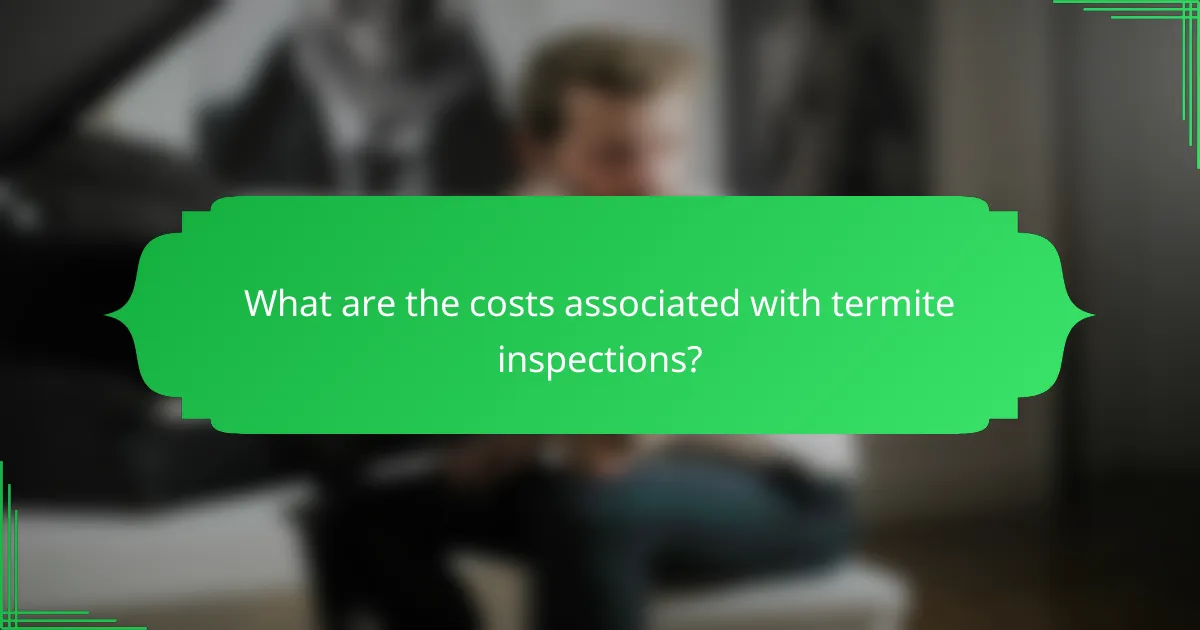
What are the costs associated with termite inspections?
The costs associated with termite inspections can vary based on location, property size, and the extent of the inspection. Generally, homeowners can expect to pay for both the inspection itself and any subsequent treatment options if termites are found.
Average inspection fees
Average inspection fees typically range from $50 to $300, depending on the size of the property and the complexity of the inspection. Some companies may offer free inspections as part of a treatment package, while others may charge a flat rate or an hourly fee.
It’s advisable to compare multiple service providers to ensure you receive a fair price. Additionally, consider asking about any hidden fees or costs that may arise during the inspection process.
Cost of treatment options
The cost of treatment options for termite infestations can vary widely, usually falling between $200 and $2,500. Factors affecting the price include the type of treatment chosen, the severity of the infestation, and the size of the affected area.
Common treatment methods include liquid termiticides, bait systems, and fumigation. Liquid treatments may cost less upfront but could require ongoing maintenance, while bait systems can be more expensive initially but offer long-term protection. Always consult with a pest control professional to determine the most effective and economical solution for your specific situation.
